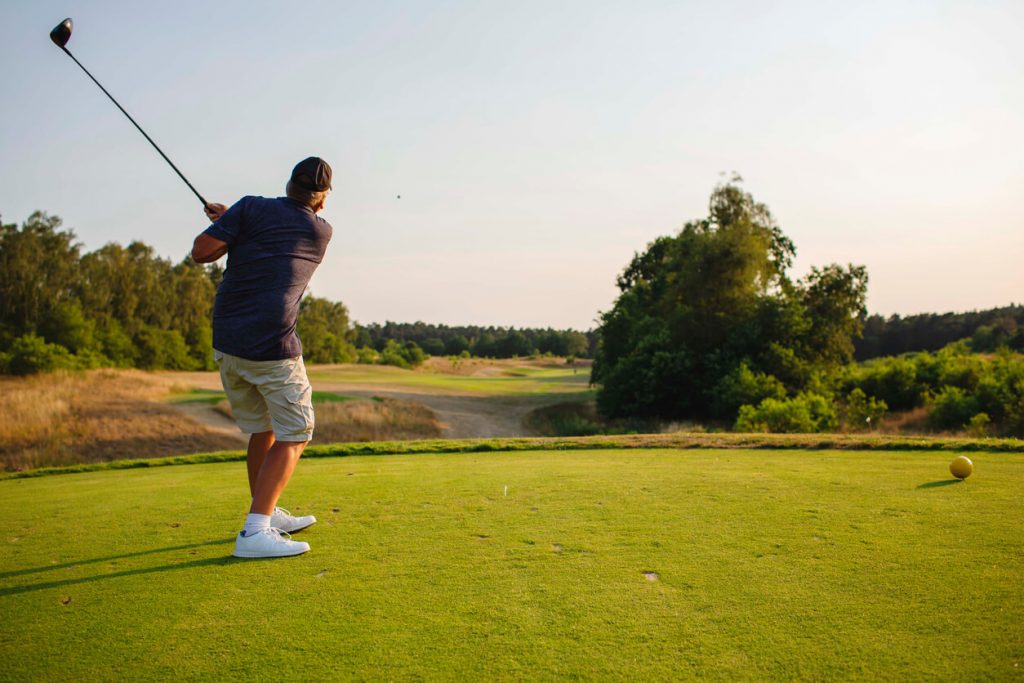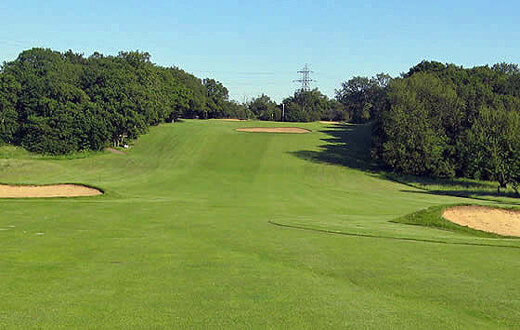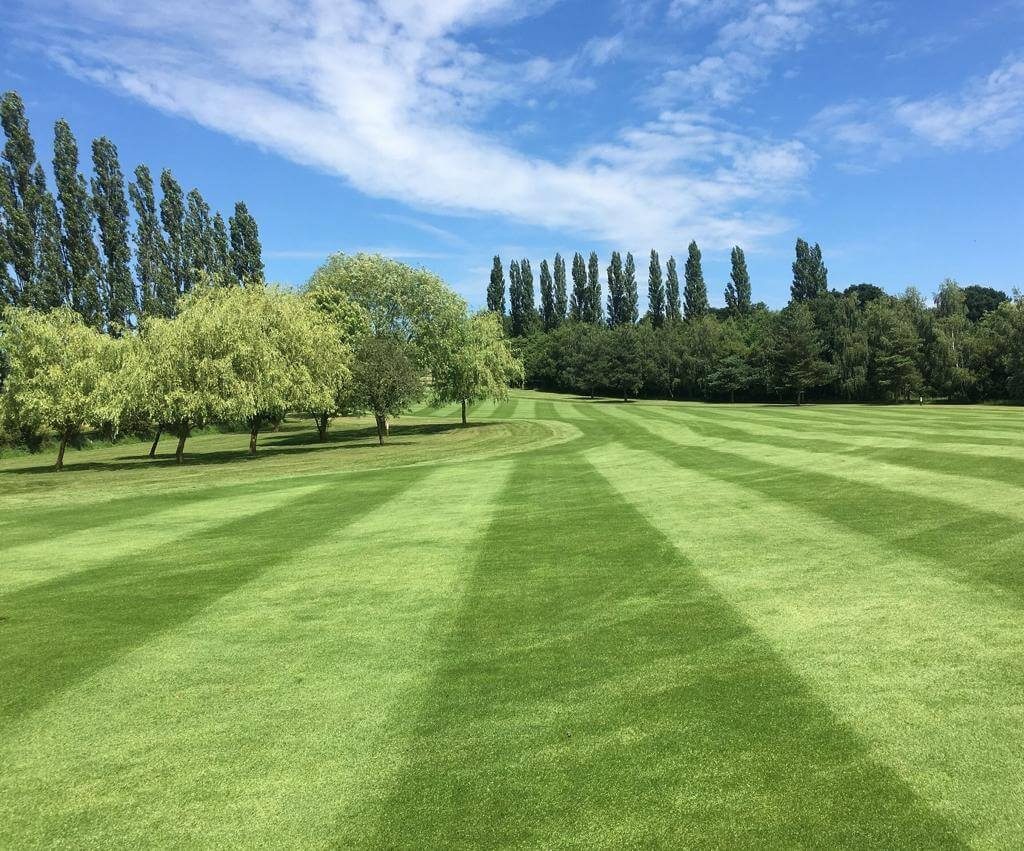Every golfer strives to improve, from the complete novice to the World’s Number One.
For the average amateur, one of the most common desires is to know how to hit a golf ball further.
Most of us recognise we’re never going to be able to send it “out there” like Rory McIlroy, but it would be nice to be able to consistently reach the fairway off the back tees and, occasionally, feel a par-5 may be “on in two.”
We’re all getting older, and it would be easy to view diminishing length on the golf course as a fait accompli. But it needn’t necessarily be so. All golfers could try some simple ways to find a few extra yards.
Here are seven tips to help you learn how to get more distance in golf.
1. Slow it down

This might sound counterintuitive, as it’s undeniable that faster clubhead speeds at impact result in greater distance. But slowing things down is vital when learning how to get more distance in golf.
A wild flailing swing does not best achieve those fast clubhead speeds. Good timing and acceleration through the ball will make the golf ball travel further.
It doesn’t matter how fast the clubhead moves away from the ball or how fast the transition is from backswing to downswing. Speed during this part of the swing is wasted energy and generally has a destabilising effect.
Try to take the club away slowly and steadily, complete the backswing, and then transition to your downswing as slowly as possible.
It would help if you naturally accelerated through the downswing, and the club head will move at maximum velocity upon reaching the ball.
Look at some of the longest hitters in professional golf; their swings seem effortless.
Examine more closely, though, and you’ll see they tend to be relaxed and smooth when it doesn’t matter (on the way back and through the transition). But it’s then that the speed kicks in, where it does matter—as the club nears, and reaches, the ball.
Related: How to grip a golf club in 5 easy steps
2. Strengthen your core
Stability through the swing will enable you to accelerate through the ball and maximise clubhead speed. This stability comes from the core—particularly your lower torso.
If you have strong abdominal and oblique muscles, you can generate more power without losing control, therefore achieving more distance.
Strengthening the core doesn’t have to mean hours spent in the gym. It’s easy to do it at home with simple exercises like the “high plank.” Hold yourself in a high press-up position for as long as possible and feel your stomach muscles working.
You might not be able to do this for very long at first, but keep at it, and you’ll soon see improvements. Alternatively, try the “low plank.” It’s the same but with your elbows on the ground rather than your hands.
Yoga and Pilates are great for strengthening the core, and many sports centres and health clubs run classes targeting golfers.
Apart from learning how to hit the golf ball further, you’ll also feel generally stronger and less prone to injuries, particularly to your lower back.
Related: Best golf exercises to improve your game
3. Go for a fitting

This could be the simplest way to learn how to hit the golf ball further, especially off the tee. If you have the wrong set-up in your driver, it could be that you’re not getting the most out of your shots.
If the shaft isn’t right for your swing, you may produce too much spin, sending the ball up rather than out. Changing the loft on your driver could optimise ball flight, giving a better trajectory and greater carry.
Changing to a driver with a draw bias may reduce distance-killing cut spin, while looking at a club with a different weight distribution could improve ball flight and increase distance.
Go to a local pro with the Mizuno Shaft Optimizer and Swing DNA system or similar ball-flight tracking technology, and see how your current kit performs.
Then check if the figures can be improved by new or different equipment. It might cost a few quid, but it’s perhaps worth it for an extra 10 yards off the tee.
Related: How to play golf on a budget
4. Check your ball
As with clubs, getting the right ball for your game can increase your distance.
Many amateurs opt for a “premium” ball, believing that if it’s the choice of the pros, it must be the best you can buy.
But many premium balls are designed for players who produce fast clubhead speeds at impact, greater than the speeds generated by the average amateur.
Below a certain clubhead speed, these premium balls will not be compressed sufficiently at impact to deliver maximum spring and distance. That’s why it’s best to shop around when learning how to hit a golf ball further.
Most major ball manufacturers produce a range of balls to suit players with different clubhead speeds.
Get your local pro to measure your clubhead speed and then consider the available options. It won’t necessarily be the most expensive ball that helps you to hit the golf ball further.
Related: The 12 best golf balls on the market
5. Try to hit a draw

The draw is the Holy Grail for most club players, but producing one is a challenging prospect for the majority.
But in terms of learning how to get more distance in golf, it’s well worth trying—in flat conditions with the same impact speeds, a ball hit with draw spin will travel further than one hit with cut spin.
When you open the face and cut across the ball, you increase the club’s loft and impart more backspin and sidespin.
This causes the ball to climb—much of the energy you have transplanted goes into upward rather than outward movement.
The more you can reduce the effects of the distance-sapping cut, the further your golf ball will fly. You don’t have to hit the ball from right to left to get results. Just try to hit a draw, lessen the cut, and you’ll see improvements.
So, ensure your grip isn’t too weak. The v created by the thumb and forefingers on both hands should point to your right shoulder. Check your set-up is square to the ball—feet, hips, knees, and shoulders should all be pointed straight at the target.
If you have a cut, the temptation is to aim left to compensate, but by opening up to the target, you exacerbate the problem, increasing the out-to-in, cut-inducing swing.
Then, as you swing, try to envisage a draw and what the clubface must do to create one—effectively wrapping itself around the right side of the ball. Imagine a topspin forehand in tennis.
Related: How to hit a draw in 5 quick steps
6. Improve centre contact
One of the best ways to learn how to hit a golf ball further is to work on your centre contact.
This means improving your consistency with hitting the ball with the centre of the club face.
Many amateur golfers either hit the ball with different areas of the club face or choose the wrong spot initially. Even being one inch away from the centre can significantly reduce your distance.
By improving this, you will not only learn how to get more distance in golf, but your shot consistency will be better overall.
Check out this video from Canadian Fade Golf for a useful drill:
Related: How to improve your contact with every club
7. Practise shifting your weight
Developing your swing technique by learning how to shift your weight properly is a great way to achieve more distance in golf.
You should keep your hips loose and use them to drive the club through your swing. This creates momentum during your downswing and increases club head speed for a more powerful impact.
During your backswing, you should shift up to around 60% of your weight onto your back leg as you reach the movement’s peak.
By the time you reach the bottom of your downswing, your front leg should be supporting around 90% of your body weight.
This takes practice, but it’s one of the most valuable ways of learning how to hit a golf ball further.







